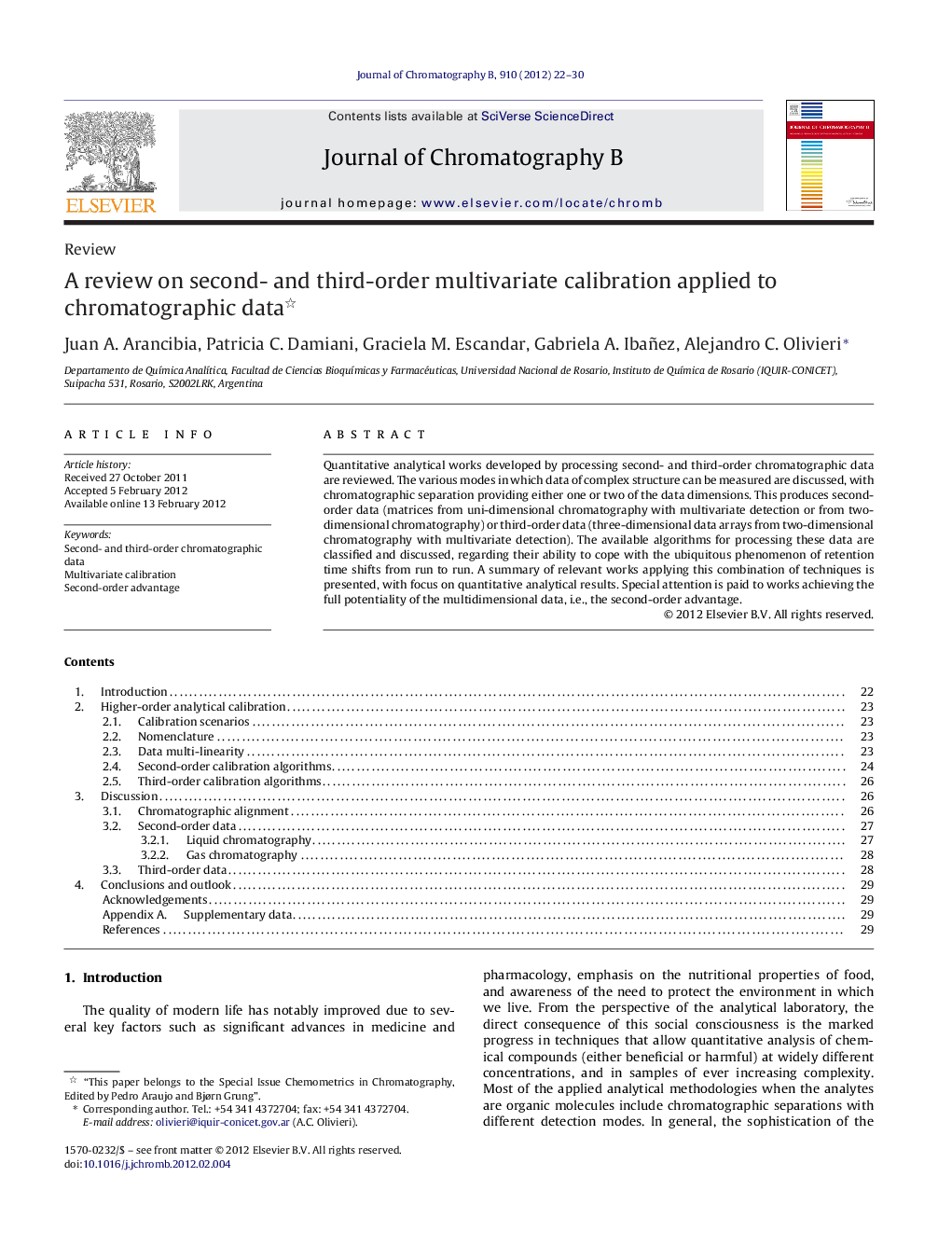| Article ID | Journal | Published Year | Pages | File Type |
|---|---|---|---|---|
| 1216742 | Journal of Chromatography B | 2012 | 9 Pages |
Quantitative analytical works developed by processing second- and third-order chromatographic data are reviewed. The various modes in which data of complex structure can be measured are discussed, with chromatographic separation providing either one or two of the data dimensions. This produces second-order data (matrices from uni-dimensional chromatography with multivariate detection or from two-dimensional chromatography) or third-order data (three-dimensional data arrays from two-dimensional chromatography with multivariate detection). The available algorithms for processing these data are classified and discussed, regarding their ability to cope with the ubiquitous phenomenon of retention time shifts from run to run. A summary of relevant works applying this combination of techniques is presented, with focus on quantitative analytical results. Special attention is paid to works achieving the full potentiality of the multidimensional data, i.e., the second-order advantage.
► Second- and third-order chromatographic analyses are reviewed. ► Multivariate calibration algorithms are described and discussed. ► Analytical chromametric applications are summarized.
